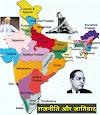$100,000 H-1B Visa Fee: End of the American Dream for Indian Tech Talent?
The United States has long been the most attractive destination for Indian engineers, doctors, scientists, and IT professionals. For decades, the H-1B visa opened doors for skilled workers to earn global exposure, higher salaries, and a pathway to permanent residency. But with the recent decision by the U.S. government to impose a $100,000 annual fee for every H-1B visa holder, the future of Indian professionals in America looks bleak.
Why This Fee Is a Game-Changer
Until now, H-1B fees were limited to a few thousand dollars — covering filing charges, anti-fraud fees, and training fees. These costs were manageable for both U.S. employers and foreign workers. The new $100,000 per year charge, however, is unprecedented.
- A U.S. company hiring an Indian software engineer on an H-1B visa will now have to pay $100,000 every year, over and above the worker’s salary, taxes, and benefits.
- Even if a company were willing to absorb the cost, the economics simply don’t add up. For example, if an Indian software developer earns $90,000–$120,000 annually, the employer would effectively spend double that amount once the fee is included.
- No American company — not even the biggest tech giants — will find this sustainable in the long run.
In short, the new law is a silent wall built to keep Indian and other foreign professionals out of the U.S. job market.
Impact on Indian Aspirants
Every year, over 70% of H-1B visas go to Indian nationals, especially in the IT sector. For thousands of Indian students studying in U.S. universities, the H-1B has been the most viable way to stay and work in America after graduation. With this fee:
- Indian students may no longer see the U.S. as a destination for higher education, since job opportunities post-study will shrink drastically.
- Fresh graduates in India, who once dreamt of joining U.S. companies like Google, Microsoft, or Amazon through H-1B sponsorship, may have to give up on that dream entirely.
- The Indian IT outsourcing industry, which heavily depends on sending talent onsite to the U.S., will face one of its biggest crises.
Was This Bill Targeted at Indians?
Though the law is framed as a general reform, the reality is clear: Indians will be the worst affected. No other nationality uses the H-1B visa at the same scale. Critics argue that this move is a political tool to curb immigration without openly banning it. By making it financially impossible, the message is loud and clear — America wants fewer foreign workers.
What’s the Maximum Salary Indians Earn in the U.S.?
While senior professionals in Silicon Valley may cross salaries of $150,000–$250,000 per year, the majority of Indian H-1B workers — especially fresh graduates and mid-level engineers — earn between $80,000 and $120,000 annually. With the new fee structure, the visa cost itself would exceed or equal their entire salary package. That makes the entire arrangement economically unviable for both employers and employees.
End of the Chapter?
This development could very well be the end of the H-1B chapter for Indians. Companies will now prefer to hire talent locally in the U.S., or outsource work to India instead of bringing Indian workers to America. For Indian aspirants, the focus may shift toward:
- Opportunities in Canada, Europe, and Australia, which continue to welcome skilled migrants.
- Building careers within India, where the tech ecosystem is rapidly growing.
- Remote work opportunities with global companies without relocating.
Final Thoughts
For decades, the H-1B visa symbolized the American Dream for Indian professionals — the chance to work hard, earn well, and build a future in the U.S. With the imposition of a $100,000 yearly fee, that dream now seems shattered.
The bill is less about economics and more about politics and protectionism. Unfortunately, its biggest casualties will be the thousands of bright Indian minds who once looked to America as the land of opportunity.










0 Comments